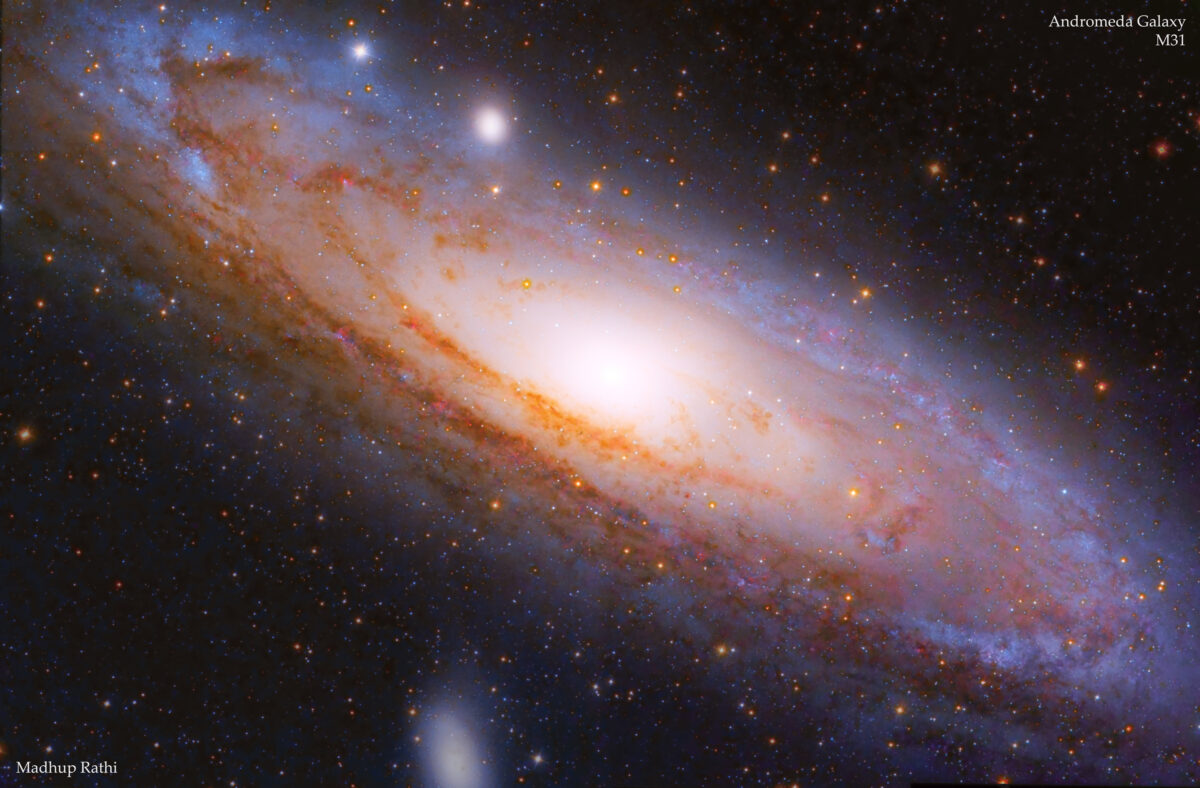Andromeda Galaxy (M31) – Andromeda Galaxy is the nearest large Galaxy to Milky Way. It consists of 1 trillion stars. The Andromeda Galaxy is a spiral galaxy approximately 2.5 million light-years from Earth in the Andromeda constellation. Also known as Messier 31, M31, or NGC 224, it is often referred to as the Great Andromeda Nebula in older texts. The Andromeda Galaxy is the largest galaxy of the Local Group, which also contains the Milky Way, the Triangulum Galaxy, and about 30 other smaller galaxies. Although the largest, the Andromeda Galaxy may not be the most massive, as recent findings suggest that the Milky Way contains more dark matter and could be the most massive in the grouping. The 2006 observations by the Spitzer Space Telescope revealed that M31 contains one trillion (10^12) stars; at least twice the number of stars in the Milky Way galaxy, which is estimated to be 200–400 billion.
This galaxy is very large as seen from Earth and covers an area about 6 times the width of Moon in the sky. My telescope’s magnification is set at about Moon’s width. So to get most of the galaxy, I had to take 8 different images of the different parts of the galaxy (4 columns and 2 row) and then merge them. I did that for the Luminance portion (in effect, black and white data whether light is coming or not) and then merged that with a color image that I had taken in 2014 on a much smaller telescope. That original picture appears at the bottom.

This is the original image shot in 2014 on Stellarvue SV80S using QSI 583wsg. 66 images of 3 minutes each – 198 minutes.
